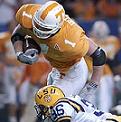|
MrMojok posted:at getting hit in the tank and having the fuel spurting out was not a pleasant experience for the flamethrower man or anyone near him. No more so than having a bucket of gasoline thrown on you. Stay away from open flames and you're OK. Sure there is fire on a WW2 battlefield but it's not so prevalent that getting some on you is going to lead you to burst into flames immediately.
|
|
|
|

|
| # ? May 11, 2024 17:01 |
|
i've heard some anecdotal poo poo about the ww2 US doctrine with flamethrowers being to only bring them out when you're not going to accept surrenders. i presume it's bullshit or propaganda?
|
|
|
|
Ensign Expendable posted:Of course, eventually, you'd have to get into the building and fight in it. Here's the method for doing that, explained in comic book form! "Assault Group: Advance! A submachinegun around your neck, ten grenades at your disposal, courage in your heart, go!" I'd heard about the "grenade every room" thing before, but never seen a primary source for it. Excellent.
|
|
|
|
If they were so effective, are armed forces today still using flamethrowers? Or were they banned for being too messy or horrifying?
|
|
|
|
SlothfulCobra posted:If they were so effective, are armed forces today still using flamethrowers? Or were they banned for being too messy or horrifying? The current mode of warfare doesn't really have a good spot for flamethrowers unless someone wants to be a real rear end in a top hat about causing lots of collateral damage.
|
|
|
|
i think their tactical niche got taken by incendiary rockets
|
|
|
|
Nenonen posted:The fuel tank is pressurized by a nitrogen tank, but a hole in the fuel tank would just spring a leak or two and the pressure would be gone in seconds with some fuel sprayed to the vicinity. The worst case scenario is the operator & terrain around him catches fire. Grand Fromage posted:
|
|
|
|
ro5s posted:This jumped out at me, do you know anything more about these guys? Were these individuals/teams issued with specialised grenades, smoke and incendiaries, that sort of thing? Did any other armies use anything like that? Yes, "chemist" refers to personnel setting up smoke charges and maintaining/loading flamethrowers. Guys throwing ordinary smoke grenades and the flamethrower operators weren't necessarily chemists. They were also in charge of poison gas protection and usage, if the war ever came to that. There were pre-war "chemical tanks" on the T-26 chassis which included flamethrower tanks and tanks with barrels of smoke/toxins mounted on them. Shortly before the war, the term fell out of vogue, and you start seeing just "flamethrower tanks". SlothfulCobra posted:If they were so effective, are armed forces today still using flamethrowers? Or were they banned for being too messy or horrifying? Fuel-air munitions are classified as flamethrowers in Russian nomenclature. Otherwise, they're not really popular anymore since there are cheaper and better ways of doing what they were used for.
|
|
|
|
SlothfulCobra posted:If they were so effective, are armed forces today still using flamethrowers? Or were they banned for being too messy or horrifying? There are better ways now to light people on fire from further away, like using thermobaric rockets out of a shoulder fired launcher.
|
|
|
|
SlothfulCobra posted:If they were so effective, are armed forces today still using flamethrowers? Or were they banned for being too messy or horrifying? Mixture of not practical for modern warfare, and "sort of banned" depending on the situation. Some nations have napalm thermobaric rockets in their arsenals. Last I read, the US dumped its flamethrowers within a few years after Vietnam and pretty much says "No incendiaries anywhere near civilians, including against vegetation and wildlife. If you can attack a military target and it's nowhere near a civilian population, then you do you. Also, incendiaries by air are pretty much cool with us whenever." EDIT: Found the thing: http://www.state.gov/documents/organization/190579.pdf
|
|
|
|
It also doesn't help that the US has to worry about half naked burned up little girls running past a news crew. I'm pretty sure no one besides us who is actually in the habit of projecting force internationally gives two solid fucks about the media the way we do.
|
|
|
|
P-Mack posted:O/T, but I want to share the joy that is history with my 5 year olds. Before I force them to read Shattered Sword, can anyone recommend any good books or TV documentaries for youngish kids? One of my daughters loves the Percy Jackson books, so something about ancient Greece would be perfect. Horrible histories might be a bit old for them book wise, but the TV show pitches a little younger (I think) and is absolutely fantastic. Crazy, anarchic, costumes and modern language, and 99% true. Really good stuff Edit: Cyrano4747 posted:It also doesn't help that the US has to worry about half naked burned up little girls running past a news crew. I'm pretty sure no one besides us who is actually in the habit of projecting force internationally gives two solid fucks about the media the way we do. This is a circuitous way of saying "don't want to get caught out indiscriminately targeting civilians with incendiary weapons since the Restrictions on the Use of Incendiary Weapons Geneva Protocol of 1980" Edit 2: no wait that's equally cumbersome lenoon fucked around with this message at 08:13 on Aug 16, 2016 |
|
|
|
FAUXTON posted:Max Plowman sounds like a cheap porn name. English name question: I know there used to be a lot of towns with streets like Gropecunte Alley and so forth, but did any people end up with names related to their not-socially-acceptable trades? Like, is there today one James Whoremonger living a quiet life in Hamfast or something?
|
|
|
|
Cyrano4747 posted:It also doesn't help that the US has to worry about half naked burned up little girls running past a news crew. I'm pretty sure no one besides us who is actually in the habit of projecting force internationally gives two solid fucks about the media the way we do. Flamethrowers were used to clear entrenched positions where civilians are of no concern. If civilian casualties were an issue then indiscriminate air bombing would be banned, but obviously that is not the case. Besides, practically no one is using flamethrowers any longer. If they still were of even the slightest practical value then you'd bet someone would be employing them right now in Syria where even chemical weapons are used and where fighters are intentionally blowing themselves up.
|
|
|
|
Grand Prize Winner posted:English name question: I know there used to be a lot of towns with streets like Gropecunte Alley and so forth, but did any people end up with names related to their not-socially-acceptable trades? Like, is there today one James Whoremonger living a quiet life in Hamfast or something? My dad lives in Netherton, West Yorkshire which used to be called Nether Shitlington (it was inbetween lower and upper Shitlington), and there were people with the surname Shitlington going back a hundred years or so when he was looking up records, but it was likely bowderlerised out of use, as the word poo poo started being considered a swear word rather than just another name for dung. It happened to a few similarly named places, but in this particular case the place didn't have anything to do with poo poo processing, it came from the name of the farm originally there. Other places in the UK, as the link mentions, did directly deal with poo poo and got their names that way. lenoon posted:Horrible histories might be a bit old for them book wise, but the TV show pitches a little younger (I think) and is absolutely fantastic. Crazy, anarchic, costumes and modern language, and 99% true. Really good stuff Seconding and thirding this, for anyone with kids. Hell, if you don't have kids it's still a great watch. DesperateDan fucked around with this message at 09:22 on Aug 16, 2016 |
|
|
|
So I just finished The Dollops podcast on the Iraqi war, and it was amazing! Entertaining and informative in equal amounts. Do you lot know of any good podcasts about modern/contemporary warfare that are reasonably impartial and well done? I don't like Hardcore History, but in that vein.. Grand Prize Winner posted:English name question: I know there used to be a lot of towns with streets like Gropecunte Alley and so forth, Still is. Copenhagen, a modern capital city, has three "poo poo street"'s, each with a different slang term from the 16-1800s.
|
|
|
|
Grand Prize Winner posted:English name question: I know there used to be a lot of towns with streets like Gropecunte Alley and so forth, but did any people end up with names related to their not-socially-acceptable trades? Like, is there today one James Whoremonger living a quiet life in Hamfast or something?
|
|
|
|
Ensign Expendable posted:
This would be an awesome video game. Forget rehashes of Enemy at the Gates, let's bust into a house full of Nazis with an SMG and 10 grenades and gently caress poo poo up. Also I know you clarified what you meant by chemists, but the mental image of screaming Russian men in white coats throwing beakers at the Germans has taken residence in my head and I had to share it. Tias posted:So I just finished The Dollops podcast on the Iraqi war, and it was amazing! Entertaining and informative in equal amounts. Do you lot know of any good podcasts about modern/contemporary warfare that are reasonably impartial and well done? I don't like Hardcore History, but in that vein... If you haven't already, check out the Dollop on the Willie Dee, it is magical. Yvonmukluk fucked around with this message at 09:52 on Aug 16, 2016 |
|
|
|
Cyrano4747 posted:It also doesn't help that the US has to worry about half naked burned up little girls running past a news crew. I'm pretty sure no one besides us who is actually in the habit of projecting force internationally gives two solid fucks about the media the way we do. I'm pretty sure both the UK and France also worry about such things. Edit: France is all about the realpolitik, sure, but half naked burned up little girls in the 21st century? Nah, not if they can help it. They're not going to be Russia levels of 'we don't give a gently caress'. feedmegin fucked around with this message at 10:19 on Aug 16, 2016 |
|
|
|
feedmegin posted:I'm pretty sure both the UK and France also worry about such things.
|
|
|
|
OwlFancier posted:The castle features, I think, in Arthurian legend, so it's a bloody old one too. Some bugger decided to pre-empt Britain's relationship with Spain by a thousand years. Except Arthurian legend is mostly a lot newer than you think, of course...it's mostly a mediaeval invention.
|
|
|
|
I was under the impression that the US admitted to using WP artillery and mortar rounds in Falluja at least, and such practices rarely are one-off. http://news.bbc.co.uk/2/hi/americas/4442988.stm
|
|
|
|
In principle WP are smoke rounds, and flamethrowers are asphyxiation weapons for use against fortifications. Napalm is definitely an anti-personnel weapon, though.
|
|
|
|
HEY GAL posted:dude, france is loving ice cold, look up their anticolonialism things The French are more likely to just pop caps into the newsteam and leave them dead in a ditch.
|
|
|
|
Mines from 1844 Ė 1907 The Russians and mines The Russians were early enthusiasts for the idea of the mine, they had home ports vulnerable to blockade and an intense rivalry with Great Britain, however during the Crimean was they made one key mistake which was that their mines were too small to have any effect, but the Russians were the first to successfully develop the idea of a chemical detonator (as opposed to a mechanical one) mechanical detonators were far less reliable than chemical or electrical ones and so would fall out of favour quickly in most quarters once the two new types were developed. A Prussian named Moritz-Herman Jacobi was employed by Nicholas I to develop his idea and what he came up with was a chemical detonator. A glass tube of sulphuric acid was laid at the top of the mine and when a ship contacted it it would deform the soft metal and shatter the glass, the acid would then run down onto a mixture of potassium chlorate and sugar creating an exothermic reaction which detonated the gunpowder. The Russians also used a competing design from Immanuel Nobel (The father of Alfred Nobel) which used a mechanical detonator. While British ships were never more than minorly damaged the Russians extensively laid mines around St. Petersburg to stop any naval interference and most critically covered the area with the naval defence guns of the city, this meant that the Royal Navy was kept at arms length and never managed to support the much feared push for the russian heartland through the city. The Russians would later repeat this effort in the First World War to great effect against the Germans. Most notably with this experience under their belts the war with the Ottomans in 1877 the Russians engaged in the first instance of offensive mining, which is where you lay mines aggressively outside enemy ports and in shipping lanes, they are typically harder to get results out of because they can be much more easily swept because they are in enemy territory so you only really have the initial suprise factor to sink a ship before your enemy takes steps to remove them, but the Russians successfully mined the Danube river, sinking a Turkish ironclad but most notably keeping the Turkish fleet penned up and ceding control of the seas to Russia and her allies. Unfortunately for Russia the Ottomans would learn from this and return the favour in 1914. The US Civil War and the contact mine. During the Civil war the mine was the single most effective weapon that the CSA had against the Federals, they sunk 27 Federal vessels using mines but only sunk 7 using gunfire, it is also interesting because we start to see the divergence between what we now think of as mines and what we think of as torpedoes, the spar torpedo was used extensively by the CSA alongside their most successful moored mine, the Singer mine. The Union side also used mines but because they had the stronger navy they had much less of a use for them and I dont believe achieved any notable success. The concept of offensive minefields had not yet really been explored, one of the big reasons for this is that the technology to lay a minefield quickly in water of unknown depth had not yet been developed (I will cover this later but it is the plummet and sinker system), so laying a minefield took a long time and knowledge of the current state of the area and so it was just impractical to lay a minefield outside the enemy harbour to blockade him in there. While the CSA used many mines similar to Bushnell and Fultons drift type mines they never had any great effect, notably during the defence of Charleston whenever the Union navy was out they would set off drifting keg mines which did very little, they used them throughout the war most notably in the mouth of the Savanah river where they attempted to mirror Bushnellís first experiment by drifting mines down the river to attack the fleet at anchor, but the admiral of that fleet stationed a line of small boats which sunk all the incoming mines with musket fire, the fear of the moored mine types did stop the Union navy from getting in close to Charleston harbour and so defeated a Union navy attempt to silence Fort Sumter, (at the time of that attack the CSA had few mines and were unlikely to do anything with them). Ultimately in a large part due to the fear of mines at the start and the presence of lots of mines later on the navy never succeeded in having a major effect on retaking Charleston and it was left to General Sherman and the army to do so.  One interesting type of mine we see in this war and not really in any other is the Frame Mine, it was essentially an array of spar torpedoes dug into the bottom of the harbour with the explosive charge on a long bar at an angle sticking up. They were only used in shallow areas and were next to impossible to force through, that reason however is the reason I think that we donít see them again, combat in the shallow waters and rivers of the American coast was a somewhat unique circumstance that didnít really repeat itself in other wars, I can only really think of the various conflicts in china that would present a similar opportunity in similar waters and the Chinese to my knowledge did not employ similar tactics.  The most useful CSA mine of the period however was the Singer Mine. The Singer Mine The Singer Mine was the most successful confederate mine, its basic operation was that it was anchored at a set depth and had a 60 pound charge of black powder, it had a heavy cap on the top of it that when a ship contacted it would be knocked off, this released a spring which dropped a hammer onto the fulminate charge which ignited the gunpowder, It was a good mine design given the technical limitations of the period, it had one major flaw however which was that because it was not fully watertight in the firing mechanism saltwater would enter the area where the spring was which would corrode the spring and render the mine useless. This is particularly relevant because it was one of the larger contributing factors that saved Admiral Farragut in his attack on Mobile bay.  drat the torpedoes, full speed ahead. The battle of Mobile bay was part of the Federal assault on the city of Mobile which was the last major port that the CSA controlled on the Gulf of Mexico near the Mississippi river. The city was defended by a field or around 90 mines, one of the larger fields laid during the civil war, Farragut was attempting to get his ships past the coastal fortifications of Fort Gaines, Morgan and Powell in order to sink the Confederate ships in the bay. His initial plan was to use the clear channel which was marked for the use of blockade runners using his ironclads to shield the wooden ships from the guns of the fort that overlooked that channel, the monitor Tecumseh was part of a squadron commanded by Captain Craven who deviated from that channel to engage the CSS Tennessee and struck a mine and she sank very quickly, believing that the mines had been submerged too long Farragut kept his nerve and moved his ship up to the front of the formation to raise the faltering morale of his ships and pressed on through to attack the CSA ships on the other side, investigation after the fact proved that he was correct in his gamble, of the 90 mines in the original field 68 had sunk and 20 were inoperable, the one that struck the Tecumseh and one that detonated when clearing the minefield were the only ones that had not been made inoperable by corrosion or water. Ultimately the CSA fell short on two counts, the first being the unreliability over a long period of the singer mine, the second is that in leaving a marked clear channel they allowed the federal fleet to enter the bay unmolested, the ironclads could shield the wooden ships without running the risk of hitting a mine, what was demonstrated there was something that will be demonstrated a lot, if you want a static minefield to have any effect then you have to cover it with fire, like any obstacle, had the mines been across the entire bay then I donít think that Farragut would have risked running it in the first place, and the two forts could have kept away the light draft ships that were used for minesweeping at that time. The CSA had proven that they were capable of laying minefields overnight in anticipation of attack and with the stopping of the blockade runners and imminent attack from the union fleet it seems strange that they did not do so, especially given that they made explicit plans to do so given their knowledge of the unreliability of the Singer mine.  That battle is the last time that ignoring a minefield went well for a naval commander, the increasing reliability of mines as time went on meant that future attempts to breeze past a minefield ended in disaster for the Russians at Port Arthur and for the British and French at the Dardanelles. Minesweeping operations. The US Civil war was, along with the Crimean war, the start of organised minesweeping efforts, the countermeasures against the keg mines were mentioned earlier but the civil war saw the first incarnation of two technologies that would be used extensively for dealing with moored mines, the Drag and the Rake. Dragging is the technique that you use if you want to get anything off the bottom of a river and while there are many variants of it they all share many similarities, two shallow draft boats move up the river or other body of water with a weighted cable between them, this runs along the bottom of the water and catches the mooring lines of the mines, these are then dragged behind the boat to a safe location where they can be sunk. The rake is the first incarnation of what will later be developed in WW1 as something called the Paravane, itís an array of metal off the front of a boat that is designed to catch mines and either push them along or detonate them far enough away from the hull that no significant damage is done to the boat itself. I donít know if one concept directly lead from the other but they both share a similar operating principle of sticking a thing out front of the boat to stop the mine hitting it. Minesweeping is an inherently very dangerous task and many of the ships used for it were destroyed or damaged by the mines they were meant to be clearing, though i will be going into minesweping techniques in more detail later, they didnt develop a whole lot beyond the very basic level here until the First World War. Technological Development of the mine after the Civil war. There were three major developments in mine technology between about 1865 and the next major use of mines in 1904, those were the Hertz horn, the automatic anchor and the replacing of gunpowder with guncotton. So far most of the mines have worked on some variant of essentially a firearm action, either flintlock or percussion cap, the first chemical detonator was developed by Jacobi but it wasnít his design that was to eventually become the standard, that would be the Hertz Horn which is one of the two most enduring features of a mine. The Hertz Horn. The Hertz horn was developed after the Austro-German war of 1866, it is not named after Heinrich Hertz the physicist who was only 9 at the time but after Dr. Albert Hertz, the basic principle of the Hertz horn is that there is an incomplete electrical circuit that runs to the detonator at the base of the horn, the horn is made of a soft metal like lead with a glass tube which contains an electrolytic solution of potassium dichromate. When a ship hit the horn the horn would deform, break the tube, the electrolyte would flow down to the base of the horn and complete the electrical circuit thus triggering the mine. This development was especially good for mines because it was stable, immune to sea turbulence and allowed a completely sealed unit which meant that the contents would not be corroded, it also worked well for guncotton as an explosive which had different thermal characteristics to the gunpowder used for Jacobiís design. The hertz horn would remain in use from its inception right up until the current day because of its reliability and simplicity.   Iranian mines captured in 1987 from the Iran Ajr showing the distinctive hertz horn shape. The Automatic Anchor. The automatic anchor was Britainís first major contribution to mine warfare, it was developed at the Mine Warfare Establishment of HMS Vernon and what it did was to create the technology necessary to quickly and accurately lay mines at a predetermined depth without knowledge of the exact sea floor depth at which you were laying. The basic principle of operation involves 3 components, a plummet, an anchor and the mine itself. The plummet is set at the desired depth below the surface and the whole mine is rolled into the water, the plummet descends to the bottom of the sea, when it contacts the bottom of the sea it locks off the mooring cable at that length, then the anchor descends dragging the mine with it until it hits the bottom too, hence leaving the mine at the desired distance below the surface of the sea. What this development allowed was the creation of fast minelayers who were capable of laying minefields stealthily outside the enemy harbour to catch them as they sortie, as it wasnít necessary to take depth soundings and manually set the mines which laid you open to being caught and the minefield swept before damage could be caused, the effectiveness of this strategy would start to be shown in the Russo-Japanese war.  Guncotton Guncotton is more commonly known as Nitrocellulose, it was discovered in the mid 1800ís and was very popularly used as a propellant in military applications, it would remain the most common explosive used in mines throughout the First World War, its greater energy release on combustion meant that naval mines could become powerful enough to sink the new generation of ships while remaining small and cheap thus avoiding the problems that the Russians had with their mines just not sinking the RNís ships. The Russo-Japanese war. The Russo-Japanese war was the first time really that mining changed the course of a war, beforehand mines had only delayed the inevitable but in this war it caused a massive swing to one side and then the other in quite short order. Both Japan and Russia had investigated mines quite heavily with the Russians being the world leaders at the time. The death of Admiral Makaroff and the sinking of the Petropavlovsk The Russian navy was on the face of it very strong indeed coming up to the 1904 war, but it suffered from a crippling lack of leadership and heavy morale issues, the Pacific fleet was stationed at Port Arthur and was by itself the equal of the Japanese fleet on paper, hence the Japanese had been looking into ways to tilt the odds, they had attempted without success to attack using torpedo boats while the fleet was in harbour but the Russians remained safe. Makaroff was the famous exception to the fleet being largely poorly lead at a high level, he was dispatched to take command in order to make the Pacific Fleet actually do something, up until that point it had remained in harbour and not interfered with Japanese troop landings. He arrived and immediately made arrangements to sortie with his fleet of 5 Battleships and supporting craft, his plan was to draw the Japanese into range of the coastal guns. What happened next is somewhat incomprehensible, the Russians had seen the Japanese lay a minefield but Makaroff disregarded it, so when the Japanese fleet responded he retired close to the shore and his flagship, the Petropavlovsk, hit a mine, sinking in minutes taking the Admiral and most of the crew with her, a second battleship the Pobeida also hit a mine but was able to be towed to safety, with the death of Admiral Makaroff and the loss of two battleships (effectively) the Russian Pacific fleet spent the rest of the war with its heavy ships at dock until they were sunk by the IJA with land based artillery, the Japanese effectively used an offensive minefield in this instance to grant themselves control of the sea, helped by the arrogance of Admiral Makaroff and the general poor state of the Russian navy as a whole, we do not know what Makaroff was thinking given his death but it seems that he gravely underestimated or disregarded the effectiveness of mines. Sinking of the Yashima and the Hatsuse. After this victory however the Japanese soon were on the receiving end, the Russian minelayers were unusually aggressively commanded, many of the lower rank officers of the Russian fleet were capable of cunning and aggressive action that their Admirals were not. A Russian minelayer observed the patrol pattern of the Japanese fleet and went out to lay mines in its path, the Japanese did not spot the minefield and sailed two of their battleships, the Yashima and Hatsuse into the minefield, they both struck one mine, then the Hatsuse struck another and sunk quickly, the Yashima sunk under tow shortly after. This cut the Japanese battleship force by a third in the space of about an hour and tipped the naval balance back in favour of the Russians, but they failed to take advantage of it and sat in port. The Japanese made efforts to sweep the minefields around Port Arthur and placed marker buoys around it, however the Russians snuck back out during the night and moved the marker buoys which lead to the Japanese losing two more light cruisers to minefields to what i can only imagine was uproarious laughter from the shore. Over the course of the war the Japanese lost 2 battleships, 2 cruisers and 11 destroyers and gunboats to Russian mines, whereas the Russians lost one battleship, one cruiser and four destroyers and gunboats, but the fear of mines allowed the numerically inferior Japanese navy to keep the Russian fleet bottled up and gave them free hand to support their land campaign until they took Port Arthur and sunk or took the Russian fleet. The Russians lost one of their most capable Admirals who was a man who was aggressive enough to take advantage of the loss of two Japanese battleships to wrest control of the sea back which would have seriously impacted Japanese capability to supply their troops and prosecute the war. The Hague convention of 1907. The Hague established a set of rules for mines, The US and Britain both went in with a disapproving attitude towards mine warfare in general, understandably given they were both essentially large naval powers who relied on the sea being open to run trade, both had far more to lose from mine warfare than they had to gain, while Britain entertained a fanciful notion much like they later did with submarines of banning it but they had to settle for a set of six main rules: 1: Any unanchored mine must become harmless after one hour 2: Anchored mines must be rendered safe if they break loose 3: No mines laid off enemy coasts with the intention of intercepting commercial traffic 4: Every precaution taken to ensure the safety of peaceful navigation 5: Belligerents remove mines at the end of conflict 6: Conversion of all existing mine stocks to match these requirements. The rules didnít work terribly well for a number of reasons, in the First World War the Germans invoked the article which stated that the rules only apply if all belligerents are parties to the convention, (Russia was not). The third rule is almost impossible to prove intent for and in practice the fourth rule just meant that each power declared a blockade of the other, which while sticking to the letter of the rules didnít really do a whole lot for the safety of neutral shipping. The only real limits on mine warfare were the first two, drift mines were fitted with soluble plugs which would dissolve and flood the casing after a certain time delay to render them harmless, but the day of the drift mine was pretty much over at this point. No power really made more than a token effort to enforce the second, there were efforts to put long delay timers that would sink mines after a certain period of time but as total war started this very quickly became much less of a relevant feature, the North sea was an excellent area for mining due to its opacity and relative shallowness and in the First World War the British and the Germans both made extensive use of mines, and for the first time we will see naval mines being used to attempt to interdict commercial shipping and to defeat the U-Boat threat. Next time: The First World War.
|
|
|
|
Polyakov posted:mines Really good stuff, keep it coming.
|
|
|
|
Fangz posted:In principle WP are smoke rounds, and flamethrowers are asphyxiation weapons for use against fortifications. Napalm is definitely an anti-personnel weapon, though. In principle yes, but I have read about both Israel and the U.S. using them against both combatants and civilians in my time. I can remember Cast Lead and the battle of Fallujah of the top of my head, but there were many others. Tias fucked around with this message at 14:34 on Aug 16, 2016 |
|
|
|
WP is a terrible AP weapon, especially when you need to control effects which we nearly always need to nowadays. it is a crazy good obscurant though.
|
|
|
|
Fangz posted:In principle WP are smoke rounds Spes Ops: The Line taught me differently
|
|
|
|
For those who've read it, how well regarded is TE Lawrence's The Seven Pillars of Wisdom? I'm over halfway through it and it's been incredibly fascinating as an insight into a whole theater I had known very little about. I understand that he obfuscated certain things and was less than truthful to protect certain people's reputations, but is it a pretty fair assessment of his own work and the work being done in that theater?
|
|
|
|
I liked The Mint more as it made the man more of a human being rather than some sort of turn of the century mythical imperial desert warrior. But then again, slightly biased as my father and grand father were both in the RAF.
|
|
|
|
|
Am I right in believing that despite the dramatic effects as shown in various photos and videos, ordinary HE would be a lot more lethal than WP rounds for artillery?
|
|
|
|
Fangz posted:Am I right in believing that despite the dramatic effects as shown in various photos and videos, ordinary HE would be a lot more lethal than WP rounds for artillery? HE rounds are amazingly lethal, and WP seems to be pretty localised to the thing it hits, albiet kicking up loads of smoke, so I'm going to go with "yes". I'm not an expert on WP rounds though by any means. Or to be fair, HE rounds.
|
|
|
|
Fangz posted:Am I right in believing that despite the dramatic effects as shown in various photos and videos, ordinary HE would be a lot more lethal than WP rounds for artillery? the only reason to ever use WP is for obscuration or if you REALLY need to light something on fire for some reason and you don't have a fuel air or thermobaric weapon
|
|
|
|
couldn't it also work as a terror weapon i mean WP is seriously nasty, chemically speaking
|
|
|
|
bewbies posted:if you REALLY need to light something on fire for some reason
|
|
|
|
Polyakov posted:Captain Craven This is an...extremely unfortunate name for a military commander
|
|
|
|
Elyv posted:This is an...extremely unfortunate name for a military commander Also the name of another sailor who did some pretty fascinating things: https://en.wikipedia.org/wiki/John_P._Craven
|
|
|
|
HEY GAL posted:yello What modern day invention or weapon are you really, really glad your guys didn't have access to? I'm guessing Willie Pete is up there, but I imagine if they had cars it would be a Blues Brother esque drunken pileup the size of Saxony
|
|
|
|

|
| # ? May 11, 2024 17:01 |
|
I'm in the middle of Operation Typhoon by Stahel. A very Glantzy look at Typhoon. So far I'd say it's fairly good, its primary focus German attitudes. I'll post some quotations when I get done with it, there are some good ones.
|
|
|
|
















































